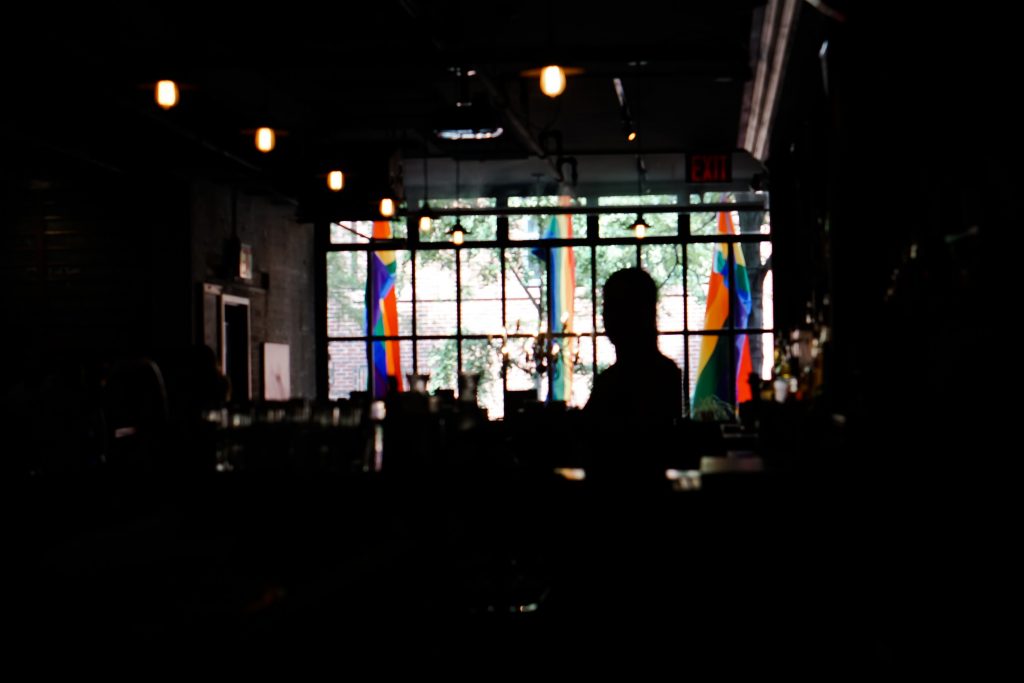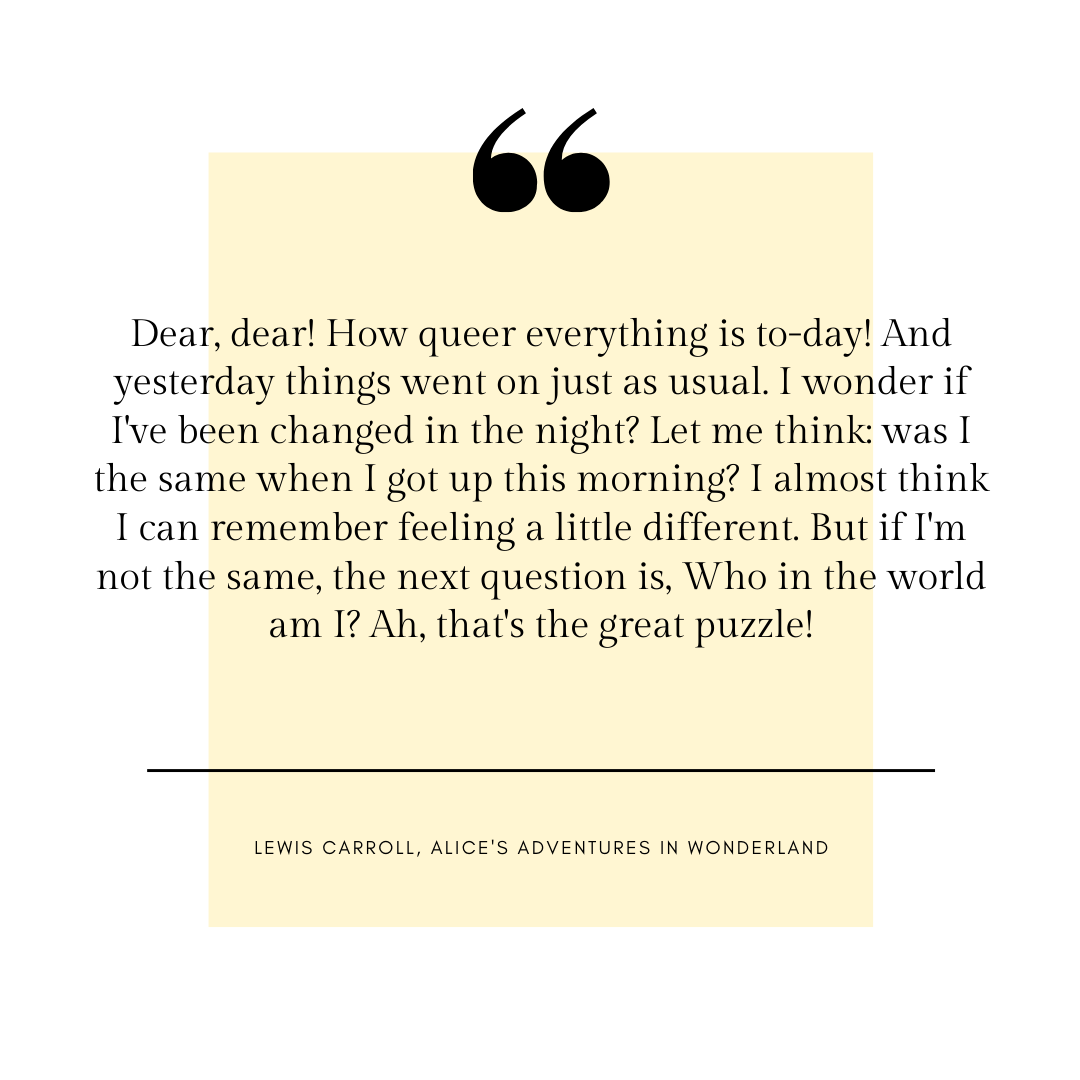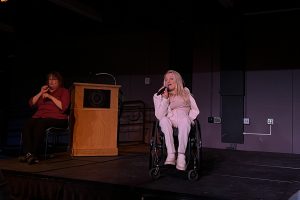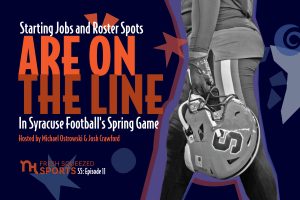Pandemic stresses already suffering LGBTQ+ bars
Pandemic stresses already suffering LGBTQ+ bars

Just a year after opening, Wunderbar temporarily closed its large, glass double doors. Instead of celebrating its first birthday with a party, the bar sold growlers of already tapped beer at the lowest possible price — not to make money, but to avoid waste. Staff had to throw out half-poured wine bottles and perishable goods. Employees were laid off with the promise of being rehired as soon as possible. The community donated to the bar’s GoFundMe page to fund groceries for employees as owner Tanner Efinger was home applying for local and federal grants and loans.
For every month the global pandemic forced its doors shut, Wunderbar lost over six thousand dollars in rent and utilities — not including loss of goods and other unexpected expenses. As we cross into the third month of pandemic-impairment, Wunderbar is out at least eighteen grand and is beginning to open back up to the public (following Upstate New York’s social distance guidelines, of course).
Wunderbar, a queer bar and theatre located in downtown Syracuse’s old Redhouse building just across Onondaga Creek from the rest of Armory Square, is the latest LGBTQ+ bar to join the area’s long time establishments — Trexx, Rain Lounge, and Wolf’s Den. All four are within a 10-minute drive of the others.
“It was just like the stars aligned,” says Efinger. “It was never the plan. It was never the goal or the dream to have a queer bar and theater, but it’s what the city needed.”
It’s not that the existing Syracuse LGBTQ+ bars and resources were doing anything wrong. Instead, he says a conversation was missing — the conversation of “how do we radically love ourselves and love each other, and make this region safer and prouder, and to have queer people and artists living and working here.”
It’s also what Efinger needed when he was younger. Living in New York City, he could pop into any dive bar and feel comfortable. That changed when he moved to the muscle boy and tank top appearance-obsessed LGBTQ+ culture of Los Angeles where he “gymed,” tanned, and plucked to fit in.
While it was a new chapter for himself and his sexuality, Efinger says there was always something missing. “I didn’t feel like I could come in and just immediately be myself. I had to work through a lot of self-hate both with myself and what I would perceive other people to not like about themselves and want to change about themselves,” he says. How many other bar owners have gone through such careful introspection before opening their businesses?
On the decline
These stay-at-home orders forcing bars to temporarily close come at a most cruel time for the industry — a time when LGBTQ+ bars are closing at higher rates than ever before.
Greggor Mattson, an associate professor of sociology at Ohio’s Oberlin College, found a decline in LGBTQ+ bars based on the disappearance of their listings from the Damron Guide, the only national guidebook of LGBT spaces, which ceased publishing last year. From 2007 to 2019, LGBTQ+ bar listings declined over 36 percent. Of these, lesbian bar listings dropped over 50 percent, cruisy men’s bar listings declined by nearly 60 percent and listings for bars serving people of color declined by nearly 60 percent. The largest five-year decline — 18 percent — occurred from 2012 to 2017 with an additional 14 percent the following two years.
Bad right? Now, pile on another risk: the coronavirus pandemic.
Sarah McKibben moved to Austin, Texas, about a year ago. Self-proclaimed as a bookstore person rather than a bar person, she says her mindset has shifted in the pandemic. Now that she can’t leave the house, much less see and interact with the queer community, she wants to go more than ever.
“Given that LGBTQ bars are already kind of a vanishing breed, it just felt extra important to protect them when the space went away. I think it’s kind of how you take things for granted until they’re not there,” McKibben says.
Many theories exist as to why LGBTQ+ bars are closing, but there is no one magic, one-size-fits-all answer.
Some think that as LGBTQ+ acceptance rises, the need for LGBTQ+ specific bars lessens. Mattson says there’s no doubt equality played some part, especially before marriage equality was legalized. Straight people went to LGBTQ+ bars at higher rates, especially for bachelorette parties to celebrate and see go-go boys. If part of equality means having the same choices and options as others, “having options to go to [a generic bar] and not get beat up for kissing your girlfriend is obviously a good thing. No one’s gonna argue with that,” says Mattson. But “straight” or “generic” bars don’t offer a place for queer culture — drag queen and king shows, fundraisers for someone looking for gender affirmation surgery or a queer cancer survivor — to take place, Mattson, the professor, points out.
Mutual aid is a backbone of queer culture, and “in their queerest forms only happen in LGBT spaces,” he says.
Others blame smartphones and online dating. Dating, cruising, and hooking up on apps like Tinder and Grindr means the smartphones we carry fulfill the functions a bar once did. Mattson says there is no research on whether they actually make it easier for people to find each other online, eliminating the need for our physical spaces. That remains an open question, Mattson points out.
Mattson also wonders, with no evidence of proof, how YouTube might play a role in eliminating the bars’ monopoly on queer culture. For instance, instead of going to a bar to see a drag performance, makeup tutorials and recorded performances are widely available on the platform. Apps like CashMe or Venmo make it easy to leave a tip.
Most people link LGBTQ+ bar closures to gentrification, at least in some form.
Mary Vice, a drag queen in San Francisco, blames the cost of living, a common result of gentrification. Her favorite bar, The Stud, was around for 54 years in the city’s SoMa district. They got by through crazy odds. Most recently, their rent was tripled. This is no easy feat — one that most establishments, regardless of LGBTQ+ affiliation, aren’t able to survive. The Stud was no exception. On May 31, the bar held an online funeral for itself, asking for donations to their Save the Stud Stabilization Fund, aiming to raise money for a possible new location down the line.
“If you’re not a big corporation making millions and millions of dollars, that’s hard to survive,” says Vice. “That essentially kills entrepreneurship and small businesses.”
Gwendolyn Stegall, an LGBT historian and preservationist, says with the trend of cities becoming trendy to live in again comes rent hikes and displacement, among other problems. It’s not that the community doesn’t want to part or stop meeting each other.
These threats are all the more dangerous with the uncertainty of the COVID-19 pandemic. Most gay bars are local, mom-and-mom or pop-and-pop shops that can’t pay their workers for more than a couple of weeks without revenue. They still have bills from suppliers, electricity, and insurance. Mattson says this puts the bars at risk for making payroll, which is overwhelmingly LGBTQ+. These workers sometimes have trouble getting employment elsewhere. Secondly, if bar owners don’t own their buildings, landlords can claim the space back. “These really small operations won’t be able to rebound very quickly, in part because they never were very highly capitalized in the first place,” says Mattson.
Lauren Armador, an architect and the founder of the lesbian and queer pop-up and soon-to-be bar Fingerjoint in Los Angeles, aims to take this pressure and blame off of LGBTQ+ people for the decline of queer spaces.
Instead, she turns that question back around by asking, “What’s wrong with the patriarchy that it’s set up a world that we can’t even have a single space for ourselves? What’s wrong with the ownership structure of bars and nightlife that women are not given a space and ownership specifically, right? I think there’s an issue with the people that are making decisions for us — the people with the money, the people with the liquor licenses. I think that those are the people we need to be asking, ‘Why isn’t there a single space for us?’”
Whatever the answer may be, the cause certainly is not the lack of money in the LGBTQ+ community. In fact, Jonathan Lovitz, Senior Vice President of the National LGBT Chamber of Commerce in Washington, D.C., says the U.S. LGBTQ+ community spent over $917 billion on goods and services in 2017 alone.
“There’s a reason all of your favorite brands go rainbow in June,” he says. “LGBT consumers make a decision about who to spend our hard-earned money with based on who we know has our back.”
For good reason, too. For many in the LGBTQ+ community, this hard-earned money did not come easily. Stegall reminds us a portion of this population makes “70 cents to the dollar and is married to somebody who makes 70 cents to the dollar.”
Armador wants to break the stereotype that lesbians don’t go out or spend money. “Of course we’re making less money than them, but like that shouldn’t be thrown back in our faces,” she says.
Their history still rings true
Historically, LGBTQ+ bars served as safe places, havens perhaps, for the community to gather, meet, and exist.
They were entry points to learn the nomenclature of being an LGBT person, to share safety tips and to make connections for political awareness or job opportunities, says Ken Lustbader, co-director of the NYC LGBT Historic Sites Project. He says this was especially important in urban settings since groups couldn’t congregate in apartments due to limited space of, say, a cramped New York City apartment. Instead, “bars became living rooms” and a radical act of political politicization, allowing a lot of marginalized people to come together.
Queer spaces still serve this purpose.
Christine Swanson, a registered nurse in Cleveland who is getting her master’s degree to become an acute care nurse practitioner, sticks to LGBTQ+ bars for this reason (at least when she finds the time to go out between work and school).
Unless actively trying to date, she says it can be hard to meet other queer people, often leaving her to feel isolated from her own community. “It’s not like there’s a worldwide group chat for all queer people. I wish there was, but there’s not,” she says.
These bars were a lifeline for a younger Rich Ferraro, the chief communications officer at GLAAD. He made friends in these bars. He knew he could simply walk in and be accepted. “I can’t imagine my development as an adult without that sense of community, that sense of affirmation,” he says.
Stegall says lesbian and queer nightlife are “very much alive and well” globally, especially in New York City. “The bars still have a very important role to play there as places that are permanent and always there for us,” she says.
The shift to queer
While LGBTQ+ bars have long catered to this need, but for whom is the larger question. Many are straying from the stereotypical gay bar that catered to cisgender, white, affluent, gay men. Now, queer bars are becoming more popular.
Mattson says this trend over the last 10 years or so is one way older gay bars have reinvented themselves, but it really started in the 1980s and 90s when gay men and lesbian women were socializing together. While he says there were always patrons who preferred a single-sex environment, they have increasingly lost out over the last decade.
Mattson calls on LGBTQ+ bars to be more inclusive. “If a bar is only serving white gay men and it’s being kind of shitty to other members of the community, maybe it doesn’t deserve to stay open if it can’t be inclusive. I’m not a supporter at all costs,” he says. “Some bars have struggled to be inclusive towards trans people. Some bars in some locations are heavily racially segregated. You’ll have a city that’s majority black, yet the bars are majority white. That’s a problem,” he says.
Armador says this shift is not only due to the demand for inclusivity but also thanks to a shift of ownership and giving people in minority communities tools to own their space. “The difference between ownership and a lease is huge,” says Amador.
Efinger says he didn’t intend to just “jump on the bandwagon.” When trying to initially name Wunderbar, he thought about “gay bar and lounge” and “nightclub.” Neither worked. He then debated the idea of a “queer bar.” That worked. In addition to loving that “queer” also means “strange,” as it is used in Alice’s Adventures in Wonderland, he wanted to figure out how the bar could contribute to the changing conversation within the LGBTQ+ community.

“There are many different ways that people identify now, and I think people need validity in that it’s okay to identify how you want,” says Efinger. He wanted to call it something people won’t understand right away. Instead, they have to figure out it is for them, whether or not they identify as queer.
The idea for Efinger is that, regardless of identity, people have pre-set assumptions as to if a gay bar makes them feel good, uncomfortable or somewhere in between. What about a queer bar? People don’t know and that’s the point. Efinger must be intentional about letting everyone know they are welcome in the space. They don’t have to question their own sexuality but they have to be willing to let and support others doing so. He wants to “radically change the way we look at our own lives, our own bodies, our own sexual desires and just be 100 percent okay with that. That’s what the space is for and that’s what a queer bar is to me,” says Efinger.
The naming process was intentional, all the way to the name “Wunderbar,” the German word for wonderful. To Efinger, it’s not just a wonderful place, but he says you can come in and be full of wonder. “You shouldn’t know what life has in store for you. You shouldn’t expect things to be the same all the time. I want people to start being excited by the unexpected and excited by changing our points of view and changing our minds no matter what that means,” he says.
Swanson says she normally sees this inclusive representation in smaller bars. “You don’t have to look or dress or act a certain way. You don’t need to appear in any sort of way to be queer. Queer people are coming in all varieties. You don’t need to fit anyone’s stereotype. It just felt very safe all over like no one ever questioned your sexuality or your belonging,” says Swanson.
Wunderbar is helping the conversation start, change, and grow in Syracuse. “People in Syracuse need this more than people in New York city, in my opinion,” says Efinger. “We have a greater need for this conversation.”
Making room for the “Aisle of Misfit Toys”
While the Syracuse community was responding well PCV (pre-coronavirus), Efinger has trouble pinpointing who frequents the bar. He says the regulars are those who understand the queer and performance identities of the bar and fit well within that. Realistically, this is a narrow target.
“If we were like trying to sustain ourselves just on those people, we actually wouldn’t sustain ourselves at all,” says Efinger.
Instead, Efinger calls the people who gravitate towards Wunderbar the “aisle of misfit toys.” These are the people who don’t necessarily feel as though they 100 percent fit in other places for any reason, be it their sexuality or their socioeconomic status or that they just feel in some way an outcast.
“Wunderbar does a really good job at being like no matter who you are, no matter what you are, no matter how you feel or how sure of how you feel you are, you are welcome to be here and either work through it or not work through it,” says Efinger.
This is why it is especially important to keep a space dedicated for the LGBTQ+ community.
Armador explains she is always a guest in public spaces, unless they are specifically designated as LGBTQ+. She wants to feel safe, comfortable, and accepted in those spaces too. “Not just safely but also being catered to, is super important. But I think it is so explicitly different than a space where you are the main priority,” she says.
She explains the difference using a sports analogy. If you told a Dodgers fan the goal should not be to have a Dodgers-specific bar with everyone rooting for the same team on game days, but instead for all teams (gasp, even the Giants) to coexist in one sports bar with no emphasis on team, or even region, how would they react?
As for LGBTQ+ bars versus “straight” bars, they are just two separate things to Armador. “I want both of them at the same time. The reason why is because I know what they feel like. They both can feel really good, but they’re different,” she says.
They are here for us
We need LBTQ+ bars to survive this pandemic because they give young LGBTQ+ folks role models. For Efinger, the shame that the LGBTQ+ community deals with, though it’s changing, creates the need for positive messaging from older generations, but they are looking at entirely different worlds.
Efinger says young queer people have a different set of cards than he did and his were different than the generation of people above him, whose cards included the AIDS virus. “We can support the visibility and positivity of the LGBTQ community by being visible, education focused, and really radically positive with our messaging and really unashamed.”
This is why Wunderbar focuses on the idea of queerness and intersectionality. “We all come from different places. We all have different opinions. We all experience the world differently, but maybe that can be the thing that unites us as queer people, as artists, as liberal people, as people who are actively seeking to make this city a place where people want to move to because of the depth of opportunity for cultural living, for a richness of life, and for sustainability in a lot of different ways.”
We need LBTQ+ bars to survive because for a community like Syracuse, where an upswing of polarizing political views are as divisive as they are nationally, a space for conversation is critical. According to Efinger, gay Trump supporters do come in to have a drink at Wunderbar “believe it or not.”
A few months ago he was bartending and the patrons that day included a pair of two gay males and a pair of two queer females. Though chatting, the girls were furious when they found out the guys were Trump supporters. They continued to argue, talk, and laugh together — all over drinks that were not tossed in each other’s faces.
We need them to survive because this polarization radicalizes the sheer act of simply being visible. Efinger realizes some will see what he does as a threat, making him concerned for the safety of those Wunderbar is catering. But when he is on his own, in non-queer spaces like the mall or train station, he says he tries to have an outward facing symbol of his queerness, usually a rainbow hat or painted nails. Because he is proud of who he is, he feels an obligation to intentionally allow others to do the same.
“I think this region needs to face its homophobia,” he says. “This region needs to face its racism. This region needs to face its segregation.”
If for nothing else, we need LGBTQ+ bars to survive because the community feels and grieves the loss of each one, no matter how many others exist close by. Efinger, despite being a competitor, says even one LGBTQ+ bar closing in Syracuse would be a huge loss.
“How actually would fewer resources for queer people help me in the long run? I want queer people to move to Syracuse. If there are two bars that aren’t that busy, that doesn’t make anyone want to move to Syracuse. But if there’s 12 bars and they’re all super busy and they all do different stuff, they’re all supporting each other, CNY Pride is huge, and every business downtown has a rainbow flag for the month of June? That is a place I want to move to.”
For cities with more than one LGBTQ+ bar, it is important to pay attention to exactly which bars are closing. In places like San Francisco, the bars that are closing are increasingly the ones catering to people of color, to women and to poor and working class queers. “When people treat gay bars like they’re all the same, they’re missing out on who’s most vulnerable to losing their places and who can’t easily move their activities online,” says Mattson.
But not all cities, especially smaller cities, are as lucky to have more than one LGBTQ+ bar. Mattson points out that “what it means to be a gay bar when you’re one of four in Syracuse is very different from being the only bar serving Asian Americans in San Francisco. It’s very different to be the only LGBT address in Dothan, Alabama, than to be one of a handful of bars in a city like Cleveland that also has a very fine LGBT center,” says Mattson, who then said Cleveland has lost half of its gay bars since he moved there.
Michael Stettner, co-founder of the LGBTQ+ blog, I Love That For You, went out to LGBTQ+ bars three to four times a week when he lived in Houston. To him, the many options available were open, welcoming, and fun. Complete comfort and no judgment was the best part of going out in Houston for him. “You’re not afraid to hold hands with someone you’re dating,” says Stettner.
After moving to Charleston a few years ago, he might go out every other month due to the lack of community he feels. There is only one LGBTQ+ bar in his new city, which is located downtown.
Though he doesn’t go often, Stettner says the loss of the sole Charleston LGBTQ+ bar would leave the community feeling lost. Businesses claiming to be LGBTQ+ friendly with a flag or small sign in the window don’t count if the patrons aren’t on the same page.
In spaces for the general public, Stettner says it’s “natural tendency” for LGBTQ+ individuals to slightly mute themselves to fit in and avoid being judged. In LGBTQ+ bars on the other hand, “there’s no judgment and everyone there is like you and isn’t judging your interests,” says Stettner.
Boise, Idaho, where social worker Konrad Juengling has lived for over four years, also has just one LGBTQ+ bar. He goes for special events, but went out multiple times a week in his twenties in Portland, Oregon. Juengling says that the closing of the last LGBTQ+ bar would be a detriment to the minority community in a red state.
“It’s the only space that some people can go and feel safe and feel like they have the ability to just be themselves. Because, you know, some of these outlying towns, you can’t go to a bar if you identify a certain way or if people perceive you to be different because they’re so conservative,” says Juengling.
While Boise has resources, such as a LGBTQ+ center and a queer book club, Juengling thinks a bar is just as important since people enjoy going to shows and getting a drink with their friends, just like their heterosexual peers.
McKibben came out when she was 28 and living in a small, rural town for her teaching job. The only LGBTQ+ spaces that existed, she says, were private and underground. “You had to know a person,” and she did not. It wasn’t until she moved to Austin that she was able to experience the LGBTQ+ bar scene.
She says it is fun, useful, and important to walk into a space and feel known and as if you belong, even if you don’t know anyone in the room. “There is that shared understanding, even if those experiences may be wildly different in a lot of ways, but there’s a shared acceptance and affirmation and sense of belonging,” says McKibben.
The problem hits home for Upstate New York too. Just an hour south on I-81 from Wunderbar is Squiggy’s Bar, the last LGBTQ+ bar in Binghamton, New York. As Mattson shared, if it closes, there is no place for drag queens and kings to practice or for the community to gather, unless of course they travel an hour to Syracuse to the next closest LGBTQ+ bars.
This is what happened in Utica with the closing of That Place, which was established in 1985 and an hour drive from downtown Syracuse. “It could be that the bars up in [Upstate New York] have consolidated themselves around Syracuse and that the bars that used to be in Rochester and the other neighboring cities, maybe Syracuse has become a hub is one possibility.”
Fighting to survive
Unfortunately, reopening the bars is far out of the control of many owners, leaving them to turn to anything they can to feel a sense of control over the situation.
Along with starting a GoFundMe to purchase employees’ groceries, Efinger used this time, rather than working up to 80 hours a week, to intentionally and actively rethink Wunderbar’s role in the community. He started a donation-based queer library, which is open to the public upon reopening. He has received over 70 book donations to date, reminding Efinger that Wunderbar is more than a queer bar and theatre. It is a resource — one that he wants to strengthen during and beyond this time.
“There’s still things that we can do and it’s not selling drinks and putting on shows and that kind of stuff. There are still ways that we can grow. The mission hasn’t changed. Everything that we do at Wunderbar is a way for artists, for local people and LGBTQ folks to engage with each other in a healthy and positive way,” says Efinger.
But these temporary LGBTQ+ bar closures during the pandemic do not just impact the bars, their owners and their immediate employees. They also impact the drag queens who so often perform in these spaces.
Mary Vice had a drag show performance booked for Monday, March 16. She was still debating canceling it that day. It was a solo at Powerhouse in the longest running drag show in San Francisco. By the time she decided to call it off, California made the same decision. The stay-at-home orders, which closed the bars, were put into place that day.
Vice says her shows at Aunt Charlie’s the weekend before felt eerie. The room was usually full but by her last performance, she was in front of a crowd of five. But she was there, so she made the most of it.
Along with giving ghost tours around downtown San Francisco — sometimes in drag — and assisting her drag mom, Vice sustains an income from drag performances. Now, she can’t give tours, her assistant work has slowed, and live drag performances have stopped. But Vice still considers herself lucky.
Soon before the pandemic turned her world upside down, she moved into a bigger apartment with two good friends, both of whom are drag queens themselves. One roommate is a videographer and photographer, so the trio has all of the equipment and technical ability to produce online shows. They upload content — online drag performances, a talk show, and an Animal Crossing gaming stream — to a joint Twitch channel up to five times a week.
It has worked for them. While more lucrative in the beginning, perhaps due to the novelty of the situation, the shows bring in a “decent” amount of money, allowing them to prevail through this time.
Vice thinks some of this new drag content may be here to stay, even after the pandemic stops holding the world indoors. Whether due to accessibility issues, nontraditional work hours or a minimum age requirement at the bars, the convenience of online drag shows can sustain an audience after bars open.
“So many people have shown that they’re really good at it, like these online shows are becoming really good. I mean I would still watch it,” says Vice. “I don’t think it’ll take the place of [in-person shows], but I think that it has shown there is an audience for it.”
Swanson is a part of this audience. Sitting on her couch drinking White Claws and listening to music on Instagram Live, Swanson waited for an hour to see one of her favorite Pittsburgh drag queens perform in a virtual show. Set up as if they were in-person, that one-hour intro was meant to feel as if viewers were drinking in the bar before the show. Drag queens performed solo (and socially-distant) on the Instagram Live, passing the stage over by merging with another queen’s account when they were done. They all had their Venmo accounts listed so viewers could tip from home.
Bar patrons are also finding ways to maintain community in the meantime. McKibben was one of 500 people to join comedian Cameron Esposito’s first virtual book talk meant to replace her book tour for the release of her memoir, Save Yourself. The Zoom chat box was flooding — a simple blink would mean missed messages. Among praise for Esposito and the other famous, queer authors speaking, attendees passed around a spreadsheet of queer book recommendations, and someone suggested a book club.
McKibben realized her Zoom Pro account and ability to facilitate large groups — both thanks to her job — would be valuable, so she offered to start it. Expecting only a few to sign up, she was shocked to see over a hundred on the list. The group has met four times — an initial meet up and three book discussions.
“Who knew [a Zoom Pro account] was going to be the most valuable currency of 2020?” asks McKibben. “I think everybody is very quick to form community in the queer community in that way, or at least in this particular case of fans of Cameron Esposito that had some shared interest there.”
Choose wisely
For local favorites, from bars and restaurants to coffee shops, survival through this period of quarantine does not ensure they will survive after everything reopens. Efinger says Wunderbar will only stay afloat with some sort of relief on expenses or if they get really busy upon reopening. That will be especially challenging, as downtown Syracuse’s slowest months are in the summer when students flee the college-dependent city.
“Business owners have a limited power to keep their business afloat,” says Efinger, “which means that the real power is in the hands of the consumer to keep the businesses that they want in their areas to stay in their area. Particularly now as so many businesses will lose lots and lots of revenue, their sustainability depends on consumers recognizing their power and acting on it.”
Mattson agrees, adding that the bars most at risk are the ones with the least amount of resources outside their local patrons. “Patronizing them is the number one thing that you can do,” he says. For now, that means sending cash tips or donating to crowdfunding efforts. When things reopen, that means going out with friends and booking events, tipping generously when you do.
Armador calls for using this time to productively rethink who we want to save and what we want our world to look like from a feminist and queer lens when we open back up. When we rebuild again, it is important to rebuild something different, more exciting, and that “feels really good,” she says.
“I don’t want that opportunity to go to waste. How do you come out of this new opportunity as opposed to just being ruined by it?” asks Amador.
For Wunderbar and beyond, it is up to the community to ensure these establishments survive in the post-coronavirus world, whatever that may look like. Without the community, “there is no financial sustainability to speak of,” says Efinger. “There’s just a lot of effort and a lot of hope.”





